Navigating the Swings: Your Comprehensive Guide to Understanding and Trading the Most Volatile US Stocks
The stock market, at its core, is a dynamic environment driven by constant shifts in supply and demand. While some stocks trade within relatively narrow price ranges, others exhibit dramatic, rapid price swings. These are what we refer to as volatile stocks, and they represent both exciting opportunities and significant risks for anyone involved in the financial markets.
Perhaps you’ve seen headlines about a stock doubling or halving in value in just a few days, or even hours. These movements are the hallmarks of high volatility. For new traders, this might seem daunting, like trying to catch lightning in a bottle. For seasoned participants, however, understanding and potentially capitalizing on volatility is a key skill.
In this in-depth guide, we will demystify stock market volatility, exploring its causes, characteristics, and how it’s measured. We’ll examine specific examples of stocks known for their wild price behavior and discuss the broader market context in which these movements occur. Most importantly, we’ll equip you with the knowledge to approach volatile stocks with a clear strategy and a robust understanding of the risks involved, just as a trusted mentor would guide you through complex terrain.
Our goal isn’t just to identify volatile stocks, but to help you understand *why* they are volatile and *how* that volatility impacts trading and investment decisions. By the end of this exploration, you should feel more confident in your ability to analyze these dynamic market segments and potentially integrate them into your trading plan, always prioritizing careful research and risk management.
-
Volatile stocks can provide substantial opportunities for profit due to their rapid price movements.
-
Understanding the driving factors behind volatility is crucial for effective trading strategies.
-
Robust risk management is essential when dealing with high-volatility stocks to safeguard against significant losses.
What Exactly Defines a Volatile Stock? Measuring the Magnitude of Price Swings
When we talk about a stock being “volatile,” we’re fundamentally describing the rate and magnitude of its price changes over a given period. A stock with high volatility sees its price move up and down significantly and frequently, while a low-volatility stock’s price is relatively stable.
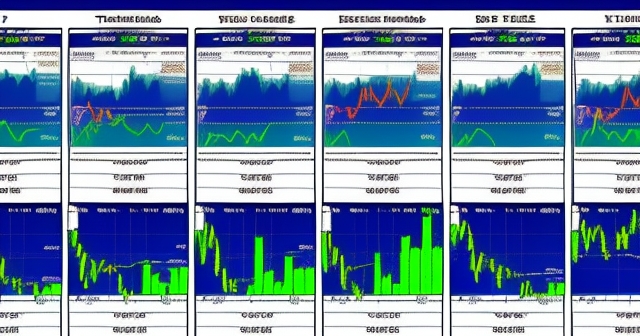
Think of it like the waves on the ocean. Low volatility is a calm sea with gentle ripples. High volatility is a storm with towering waves crashing against the shore. These dramatic price movements often occur over short timeframes, such as within a single trading day.
One of the most straightforward ways to understand a stock’s volatility is by looking at its intraday range. This is the difference between the highest price the stock traded at during the day and the lowest price it traded at. For a highly volatile stock, this range will be substantial, both in absolute dollar terms and as a percentage of the stock’s price.
For instance, if a stock opens at $10, surges to $15, and then drops to $7 before closing at $12, its intraday range is $15 – $7 = $8. If its previous closing price was $10, an $8 range on a $10 stock represents an 80% potential swing within that single day! This is extreme volatility.
Financial data platforms often measure volatility using metrics like Daily Volatility (%). This metric typically captures the average percentage price change over recent trading sessions or calculates the percentage difference between the intraday high and low prices relative to the previous day’s close. A stock showing a daily volatility percentage of 10%, 20%, or even much higher indicates a potential for massive price swings every single day.
Another related concept is Beta. While Beta measures a stock’s sensitivity to overall market movements (like the S&P 500), stocks with high Beta often correlate with high volatility because they tend to amplify the market’s swings. However, a stock can be highly volatile due to company-specific factors even if its Beta is low, so Beta is not the *only* measure of volatility.
Ultimately, a volatile stock is one where the market consensus on its fair value is shifting rapidly, leading to large and unpredictable price fluctuations. These aren’t stocks that move a few cents a day; they are stocks capable of multi-dollar, multi-percentage point movements that can significantly impact a trader’s or investor’s position in short order.
| Metric | Description |
|---|---|
| Intraday Range | The difference between the highest and lowest price of a stock within a single trading day. |
| Daily Volatility (%) | The average percentage price change over recent trading sessions. |
| Beta | Measures a stock’s sensitivity to overall market movements. |
The Powerful Engines Driving Stock Volatility: Why Prices Go Wild
What forces propel a stock from relative stability into a state of intense volatility? The answer typically lies in significant changes in the information available to the market, coupled with uncertainty about the future implications of that information. When new data emerges, traders and investors rush to re-evaluate the stock’s worth, leading to rapid price adjustments. The more uncertain the outcome, the wilder the swings can become as conflicting opinions battle it out in the market.
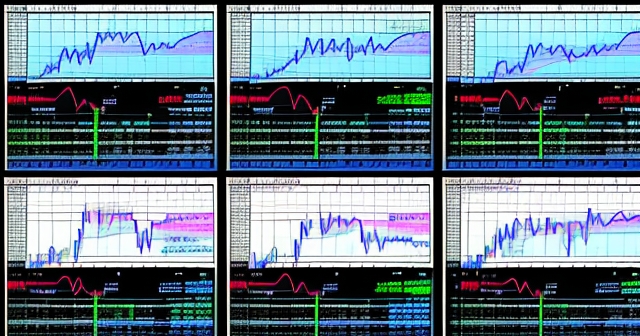
Let’s explore some of the most common catalysts for extreme stock volatility:
-
Significant News & Announcements: This is arguably the most frequent driver. News could relate to earnings reports (beating or missing expectations, strong or weak guidance), clinical trial results (especially for biotech/pharma), product launches or failures, major contracts, regulatory approvals or rejections, or even management changes. When the news is unexpectedly good or bad, and its long-term impact is unclear, it can trigger huge price gaps and intraday swings.
-
Corporate Actions: Events like stock splits or reverse stock splits, mergers, acquisitions, or spin-offs can dramatically impact a stock’s price and investor sentiment, leading to volatility as the market digests the new structure or share count.
-
Changes in Short Interest: If a stock has a high percentage of its shares sold short (traders betting the price will fall), positive news or a price increase can trigger a “short squeeze.” As short sellers are forced to buy shares to cover their positions, it creates strong buying pressure, causing the price to surge rapidly and creating immense volatility.
-
Analyst Rating Changes: While perhaps less impactful than major news, sudden upgrades or downgrades from prominent analysts, especially if unexpected or accompanied by significant price targets, can influence trading behavior and contribute to short-term volatility.
-
Social Media & Retail Investor Interest: In recent years, we’ve seen instances where coordinated buying efforts from online communities can dramatically inflate a stock’s price, leading to extreme volatility disconnected from traditional fundamentals. This phenomenon can also create sudden sell-offs if sentiment shifts.
-
Sector-Specific or Macroeconomic Events: Sometimes, volatility isn’t confined to a single stock but affects an entire sector or even the broader market. Changes in interest rates, inflation data, geopolitical events (like trade disputes or political instability), or shifts in consumer sentiment can create widespread uncertainty and volatility across numerous stocks.
It’s important to remember that high volatility often stems from a market in flux, where new information is being processed and opinions on value differ wildly. This dynamic environment is what creates the large price swings characteristic of these stocks.
A Closer Look at Stocks Making Big Moves: Spotlighting Today’s Most Volatile Players
Looking at real-world examples helps solidify our understanding of volatility. While the specific list of the “most volatile” stocks changes constantly with market conditions and news cycles, we can examine characteristics commonly found in stocks appearing on these lists.
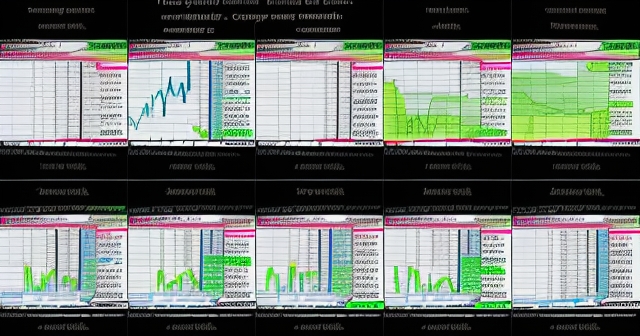
Based on recent financial data, stocks like LRHC (La Rosa Holdings Corp.), KAVL (Kaival Brands Innovations Group, Inc.), WKHS (Workhorse Group), and SPCE (Virgin Galactic) have frequently appeared on lists of highly volatile stocks. What do many of these have in common?
-
High Daily Percentage Swings: You’ll often see their “Change %” figures displaying double-digit increases or decreases in a single day. For example, a stock might report a +35% day followed by a -20% day.
-
Significant Volume Relative to Average: High volatility often comes hand-in-hand with increased trading activity. When major news breaks or sentiment shifts, many traders and investors pile in or out, driving up trading volume far beyond its typical average.
-
Smaller Market Capitalization: Many of the stocks exhibiting extreme volatility are smaller companies (small-cap or micro-cap). Their lower share float and smaller overall value mean that a relatively small amount of trading volume can have a much larger impact on the stock price compared to a large, stable blue-chip company.
-
Association with Recent News or Indicators: Often, scanning the news headlines or checking specific indicators for these stocks reveals a recent catalyst. This could be a positive or negative earnings surprise, news about a potential deal, a clinical trial update, or a significant gap up or gap down at the market open triggered by overnight developments.
-
Sector Influence: While volatility can strike anywhere, certain sectors are inherently more prone to dramatic swings due to the nature of their business. Biotechnology, for example, sees huge volatility based on clinical trial results. Early-stage technology or electric vehicle companies (like GOEV or EVTV) can be volatile based on production updates, funding rounds, or regulatory news. Energy stocks can react sharply to oil price movements or geopolitical events.
It’s crucial to understand that appearing on a “most volatile” list is not an endorsement or a buy signal. It’s simply an observation of recent price behavior. Each stock is volatile for its own specific reasons, which require careful investigation before considering any trading action.
| Characteristic | Description |
|---|---|
| High Daily Percentage Swings | Stocks often display significant price changes in a single day, representing high volatility. |
| Significant Trading Volume | These stocks typically experience increased trading activity during volatility events. |
| Smaller Market Cap | Volatile stocks often belong to smaller companies, allowing less trading volume to impact the price more significantly. |
Volatility Isn’t Just for Single Stocks: The Broader Market Picture
While our focus is on identifying and understanding individual highly volatile stocks, it’s equally important to recognize that volatility can also be a characteristic of the broader market itself. There are periods when major indices like the S&P 500, the Dow Jones Industrial Average, and the Nasdaq Composite all experience significant daily swings.
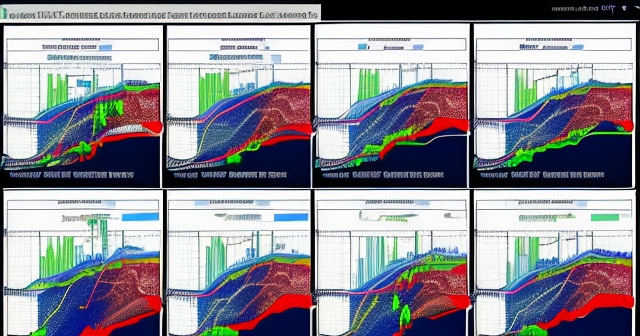
These periods of market-wide volatility are often driven by large-scale macroeconomic factors or significant geopolitical events that impact investor sentiment across the board. For example, uncertainty surrounding international trade policies, changes in central bank interest rates, or unexpected global crises can trigger widespread selling or buying pressure, leading to substantial daily moves in the major indices.
A key indicator traders and analysts use to gauge overall market volatility is the CBOE Volatility Index, or VIX. Often referred to as the “fear index,” the VIX measures the market’s expectation of future volatility over the next 30 days, based on options prices on the S&P 500 index. When the VIX spikes, it indicates increased market anxiety and the expectation of larger price swings in the near future. Conversely, a low VIX suggests complacency and anticipated stability.
Understanding the VIX and the overall market climate is vital because even the most fundamentally sound stock can get caught up in a wave of market-wide volatility. A stock that is usually stable might experience unusual swings simply because the overall market is reacting to a major economic announcement or a geopolitical event. This is systemic risk – the risk inherent to the entire market or a large segment of it.
Navigating volatile individual stocks requires not only analyzing the specific company but also understanding the prevailing market conditions. Are you trading a volatile stock during a generally calm market period, or are you doing so during a time of heightened market-wide uncertainty? This context can significantly influence the potential risks and outcomes.
Embracing the Challenge: Strategies for Trading Volatile Stocks
Given their propensity for large, rapid price movements, volatile stocks present a unique proposition for traders and investors. On one hand, the potential for substantial profit in a short timeframe is significantly higher than with less volatile assets. A stock that can move 20% in a day offers the chance for quick gains if you are on the right side of the move.
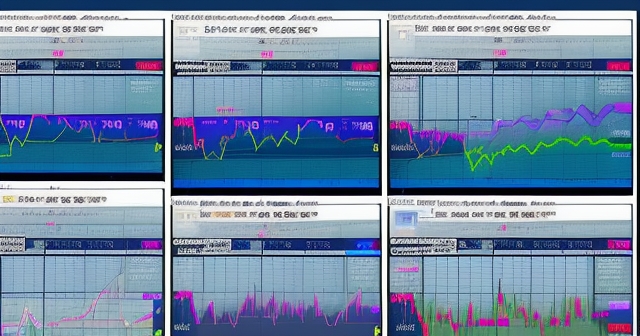
On the other hand, the risk is equally, if not more, pronounced. Just as easily as a volatile stock can surge 20%, it can also plummet 20% or more. This means that being on the wrong side of a move can lead to rapid and significant losses. This high-risk, high-reward dynamic is what attracts many short-term traders but can be perilous for those unprepared for the potential downside.
Trading volatile stocks is generally not recommended for passive or long-term investors seeking stable growth or income. Their unpredictable nature makes them more suitable for active traders who can monitor positions closely and react quickly to market changes. These traders often employ specific strategies designed to capitalize on momentum, price gaps, or short-term trends.
Success in this arena heavily relies on:
-
Robust Analysis: This includes understanding the specific catalyst driving the volatility (Is it news? A short squeeze? Broader market sentiment?), analyzing technical chart patterns that might indicate potential price direction, and understanding the underlying fundamentals, however speculative they might seem.
-
Precise Entry and Exit Points: Due to the speed of price changes, timing is critical. Traders often use technical indicators and chart patterns to identify potential entry points and, crucially, pre-defined exit points (both for taking profits and cutting losses).
-
Strict Risk Management: This is non-negotiable. We will discuss this in detail shortly, but it involves controlling position size and using tools like stop-loss orders.
-
Emotional Control: Volatility can trigger intense emotions like fear and greed. Staying disciplined and sticking to your trading plan is paramount.
Approaching volatile stocks without a clear strategy and understanding of the risks is akin to gambling. With preparation and discipline, however, it can become a calculated endeavor within your overall trading activities.
The Human Element: Psychology and Trading Volatility
Let’s be honest, dealing with rapid price swings isn’t just about charts and news; it’s deeply psychological. The sheer speed and magnitude of changes in volatile stocks can amplify common trading biases and emotions. Understanding this human element is just as important as understanding the market mechanics.
Two primary emotions that can be particularly challenging when trading volatility are fear and greed.
When a volatile stock moves against your position, fear can set in quickly. You might panic and sell prematurely, locking in a loss that the stock might have recovered from later. Conversely, if a position is moving favorably, greed might tempt you to hold on too long, hoping for an even bigger gain, only to see the price reverse suddenly and erase your profits.
The rapid shifts can also trigger FOMO (Fear Of Missing Out). Seeing a stock surge dramatically might make you want to jump in immediately, even if your analysis doesn’t support it, just because you don’t want to miss the rally. This can lead to buying at the peak of a move, right before a sharp reversal.
Another psychological pitfall is confirmation bias, where you only seek out information that supports your existing view on a volatile stock, ignoring contradictory signals. This can be particularly dangerous when dealing with stocks driven by hype or speculation.
Trading volatile stocks demands a heightened level of emotional discipline. How do you build this discipline?
-
Develop a Trading Plan: Before entering a trade, define your entry point, target profit level, and maximum acceptable loss. Write it down. This pre-commitment helps you make decisions based on analysis, not emotion, during the heat of the moment.
-
Stick to Your Plan: This is the hard part. When fear or greed scream at you to deviate, remind yourself of your plan. If your stop-loss is hit, exit the trade as planned, even if it’s painful.
-
Start Small: If you’re new to trading volatility, begin with very small position sizes. This limits your financial exposure and reduces the emotional pressure, allowing you to focus on executing your strategy correctly.
-
Learn from Experience: Review your trades, both winners and losers. What did you do right? What went wrong? Did emotions play a role? Analyzing past trades is crucial for improving your psychological game.
Mastering the mental game is just as critical as mastering the technical aspects when navigating the choppy waters of volatile stock trading.
Applying Technical Analysis Tools in Volatile Markets
For traders engaging with volatile stocks, technical analysis often plays a central role. While fundamental analysis helps identify *why* a stock might be moving, technical analysis helps identify *how* it is moving and where it might go next, based on price and volume patterns. However, volatile markets can pose unique challenges for standard technical indicators.
In highly volatile environments, traditional charting patterns like flags, pennants, or triangles might form and resolve much faster than usual. Candlestick patterns, which show the open, high, low, and close prices for a period, become incredibly important as they graphically depict the intense intraday battles between buyers and sellers, often leaving long “wicks” or “shadows” that show where prices swung before settling.
| Technical Indicator | Description |
|---|---|
| Moving Averages | Help show overall trend direction but may whipsaw frequently in volatile markets. |
| Relative Strength Index (RSI) | Measures momentum; can show extreme levels quickly in volatile stocks. |
| Bollinger Bands | Indicates volatility levels and potential extremes, expands with increased price swings. |
| Volume Analysis | High volume lends credibility to price movements, especially during volatility events. |
It’s crucial to remember that no technical tool is foolproof, especially in volatile markets where fundamental news can instantly override any chart pattern. Technical analysis should be used as a tool to inform potential entry/exit points and understand market structure, always in conjunction with awareness of the underlying catalysts and robust risk management.
Shielding Your Capital: Essential Risk Management for Trading Volatility
We cannot stress this enough: Risk management is paramount when trading volatile stocks. The potential for rapid losses is high, and without proper controls, a few bad trades can severely deplete your trading capital. Thinking like a risk manager before thinking like a profit-seeker is the sign of a disciplined trader.
Here are key risk management principles you must employ:
-
Position Sizing: This is perhaps the most critical rule. Never allocate too much of your total trading capital to a single volatile trade. Because the stock price can move so much, even a modest position size can result in a large dollar loss if the trade goes against you. Many experienced traders risk only a very small percentage (e.g., 1% to 2%) of their total account on any single trade, especially with highly volatile stocks. This way, even if they are wrong multiple times, no single loss is catastrophic.
-
Stop-Loss Orders: A stop-loss order is an instruction to your broker to sell a stock automatically if it reaches a specific price level. This limits your potential loss on a trade. For volatile stocks, setting appropriate stop-loss levels can be tricky – set them too close, and you might get “stopped out” unnecessarily by a random price whip; set them too far, and you risk a larger loss than intended. Active traders often use mental stops or trailing stops, but for beginners, a hard stop-loss order is a vital safety net. Be aware of “slippage” in volatile markets, where your order might execute at a price worse than your stop level.
-
Take-Profit Orders: Just as you define your maximum loss, it’s wise to define your target profit. Volatile stocks can reverse course just as quickly as they surged. Using limit orders to automatically sell when your target price is reached helps ensure you capture gains and aren’t caught holding the stock when it inevitably pulls back.
-
Avoid Over-Leveraging: Trading volatile stocks on margin (borrowing money from your broker) exponentially increases both potential profits and potential losses. A small adverse price move can lead to a margin call, forcing you to sell at a loss. It is highly advisable for beginners and even experienced traders to be extremely cautious or avoid using margin when trading highly volatile assets.
-
Diversification (with caution): While active traders might focus intensely on a few setups, investors should generally be diversified across different assets and sectors to reduce the impact of a single volatile stock or sector performing poorly. However, the *type* of diversification matters; simply owning multiple highly volatile stocks doesn’t necessarily reduce risk effectively. True diversification involves holding assets with low correlation.
Treating risk management as an integral part of every trading decision, rather than an afterthought, is the foundation for long-term survival and potential success in volatile markets.
Volatility Across the Economic Spectrum: Sectoral Insights
While any stock can become volatile under the right conditions, certain sectors inherently exhibit higher levels of volatility due to their business models, sensitivity to economic cycles, or reliance on binary outcomes (pass/fail events). Understanding these tendencies can help you anticipate where you might find more volatile opportunities – and risks.
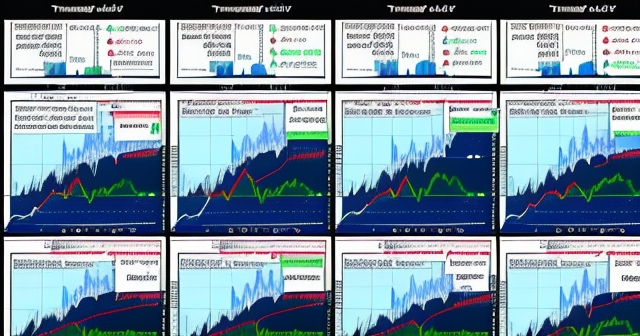
Let’s look at a few sectors often associated with notable volatility, drawing parallels to the data we’ve discussed:
-
Biotechnology and Pharmaceuticals: This sector is a prime example of event-driven volatility. A company’s stock price can skyrocket or collapse based entirely on the results of clinical trials for a new drug (e.g., SLRX, SCLX, SLS, SYNX). Regulatory decisions (FDA approval or rejection) also create massive swings. These are often “all or nothing” events that introduce extreme uncertainty.
-
Technology (especially early-stage or disruptive): Companies developing cutting-edge or unproven technologies, or those in rapidly evolving markets (like electric vehicles – GOEV, EVTV; or niche tech – AIH, SRAX), can experience high volatility based on product development milestones, competitive landscape shifts, adoption rates, or funding news. Market sentiment and future growth potential often play a larger role than current profits, making them susceptible to speculation and large price swings.
-
Energy: Stocks in the oil and gas sector, or alternative energy (like Workhorse Group, WKHS, which has EV interests), can be highly volatile due to fluctuations in commodity prices (oil, natural gas) driven by global supply and demand, geopolitical events, or changes in government energy policy. Renewable energy stocks can be volatile based on subsidies, technological breakthroughs, and project announcements.
-
Consumer Discretionary (certain segments): While large retail or consumer goods companies might be stable, certain segments within consumer discretionary, particularly those tied to niche markets, new trends, or heavily impacted by consumer sentiment and economic cycles, can be volatile. Companies tied to leisure, specific retail fads, or high-end goods can see swings based on economic outlook and consumer spending confidence.
-
Small-Cap Stocks across various sectors: As we noted when looking at examples like LRHC, KAVL, CNSP, etc., smaller companies, regardless of their sector, tend to be more volatile than large, established corporations. Their smaller size means they are more sensitive to individual project successes or failures, have less financial cushion, and their stocks are easier to move with less trading volume.
| Sector | Characteristics of Volatility |
|---|---|
| Biotechnology | Stock prices fluctuate based on clinical trial results and FDA approvals. |
| Technology | High volatility influenced by product milestones and market sentiment. |
| Energy | Volatility driven by commodity price changes and geopolitical events. |
| Consumer Discretionary | Niche markets and economic cycles can lead to significant price swings. |
| Small-Cap Stocks | More sensitive to market changes, leading to increased volatility. |
Understanding these sector tendencies can give you a head start in identifying potential areas where volatility is more likely to manifest. However, remember that a major news event can cause volatility in *any* stock, regardless of its typical sector behavior.
When Markets Pause: Understanding Trading Halts
In the face of extreme, sudden volatility, regulatory bodies and exchanges have mechanisms in place to temporarily pause trading in a stock or even the entire market. These are known as trading halts, and understanding why they occur is important when dealing with volatile stocks.
The most common reason for a halt in a specific stock is “News Pending”. When a company is about to release significant, market-moving information (like earnings, a merger announcement, or clinical trial results), trading might be halted just before the release to allow all market participants to receive and digest the information simultaneously. This prevents informed traders from acting on the news before others have a chance, promoting a more orderly market opening after the halt is lifted.
Other reasons for single-stock halts can include:
-
Regulatory Concerns: If there are questions about the integrity of trading in a stock, or if regulatory issues arise, a halt might be put in place.
-
Volatility Halts (Circuit Breakers): For highly volatile stocks, exchanges have rules in place that can trigger a brief trading pause if the price moves too far too quickly within a short period. These circuit breakers are designed to slow down trading during moments of extreme volatility and prevent flash crashes or out-of-control spikes, giving traders a moment to reassess.
Beyond single stocks, there are also market-wide circuit breakers that can halt trading on all major exchanges if the S&P 500 index drops by a certain percentage within a trading day. These are designed to prevent panic selling during major market crashes.
If you hold a volatile stock and trading is halted, don’t panic. Check official news sources and the exchange’s website for the reason and expected duration of the halt. Trading will eventually resume, often with significant price movement as the market reacts to the news or event that caused the halt.
Different Hats to Wear: Long-Term Investing vs. Volatility Trading
We’ve discussed that volatile stocks offer potential profit but carry significant risk. This naturally leads to the question of suitability for different approaches to the market. It’s crucial to distinguish between long-term investing and short-term trading when considering volatile assets.
Long-term investing typically involves buying shares of companies with strong fundamentals, growth potential, or stable income streams, with the intention of holding them for years, even decades, to benefit from compounding growth and dividends. Long-term investors are generally less concerned with daily price swings (volatility) and more focused on the company’s long-term performance and value creation.
For long-term portfolios, highly volatile stocks are generally considered speculative. Their unpredictable nature means that relying on them for consistent long-term returns is risky. While a volatile stock *could* become a successful long-term investment if the underlying company thrives, the path there is often fraught with dramatic drawdowns that many long-term investors are uncomfortable with or simply don’t need to endure.
Short-term trading, on the other hand, focuses on profiting from price movements over shorter timeframes – from minutes (day trading) to days or weeks (swing trading). This approach is inherently more concerned with volatility, as price swings are the very source of potential profit.
Highly volatile stocks are often the *primary* focus for short-term traders specifically because of their large swings. Traders might aim to capture a portion of an intraday move, ride momentum fueled by news for a few days, or even attempt to profit from a short squeeze. Success in this involves rapid analysis, quick decision-making, and tight risk control.
It’s not about one approach being “better” than the other; they are simply different. A diversified long-term portfolio might include a small, speculative allocation to a potentially high-growth (and therefore potentially volatile) company, but the bulk of the portfolio would likely be in less volatile assets. Conversely, a dedicated short-term trader’s portfolio might consist largely of highly volatile stocks, but their exposure and risk per trade would be strictly managed.
Understanding your own financial goals, risk tolerance, and time horizon is the first step in deciding if and how volatile stocks fit into your personal market activities.
Conclusion: Navigating the High-Octane World of Volatile Stocks
Stock market volatility is an inherent characteristic of financial markets, reflecting the constant interplay of information, sentiment, and economic forces. Highly volatile stocks, in particular, are those that experience dramatic and rapid price swings, often driven by significant, yet uncertain, company-specific news or broader market events.
We’ve seen how volatility can be measured through metrics like intraday range and daily percentage change, and explored the powerful catalysts that can send a stock’s price on a wild ride – from earnings reports and stock splits to shifts in short interest and macroeconomic policy.
While volatile stocks like LRHC, KAVL, WKHS, and SPCE present the potential for significant, rapid profits due to their large price movements, they come hand-in-hand with equally substantial risk. This makes them generally more suitable for active traders with robust strategies rather than traditional long-term investors.
| Crucial Factors for Trading | Description |
|---|---|
| Understanding Volatility Causes | Investors should analyze market conditions and specific factors affecting volatility. |
| Technical Analysis Tools | Using charts and indicators to track price movements and market trends. |
| Emotional Discipline | Managing emotional reactions such as fear and greed during trading. |
| Risk Management Practices | Applying strategies like position sizing and stop-loss orders to mitigate risks. |
Approaching volatile stocks with a knowledgeable, cautious, and disciplined mindset is essential. They are not for the faint of heart, nor for those seeking guaranteed returns. However, for those who are prepared, they offer a fascinating and potentially rewarding segment of the financial markets to explore.
Always remember to do your own thorough research and consider consulting with a financial advisor before making any trading or investment decisions, especially concerning highly volatile assets.
most volitile stocksFAQ
Q:What defines a volatile stock?
A:A volatile stock is characterized by rapid and significant price movements over a short period, driven by various market factors.
Q:How can I manage risks when trading volatile stocks?
A:Utilize risk management strategies such as stop-loss orders, position sizing, and maintaining emotional discipline to limit potential losses.
Q:Are volatile stocks suitable for long-term investment?
A:Generally, volatile stocks are more suited for active trading, as they carry higher risks and are unpredictable for long-term investments.
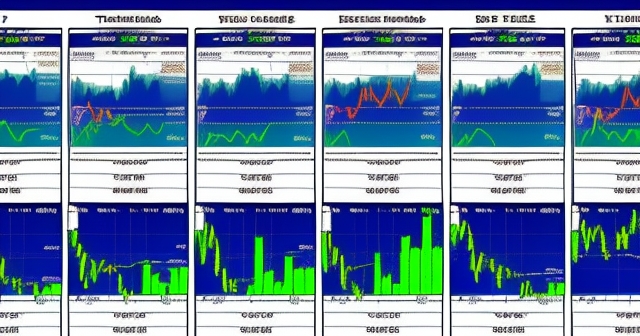
留言